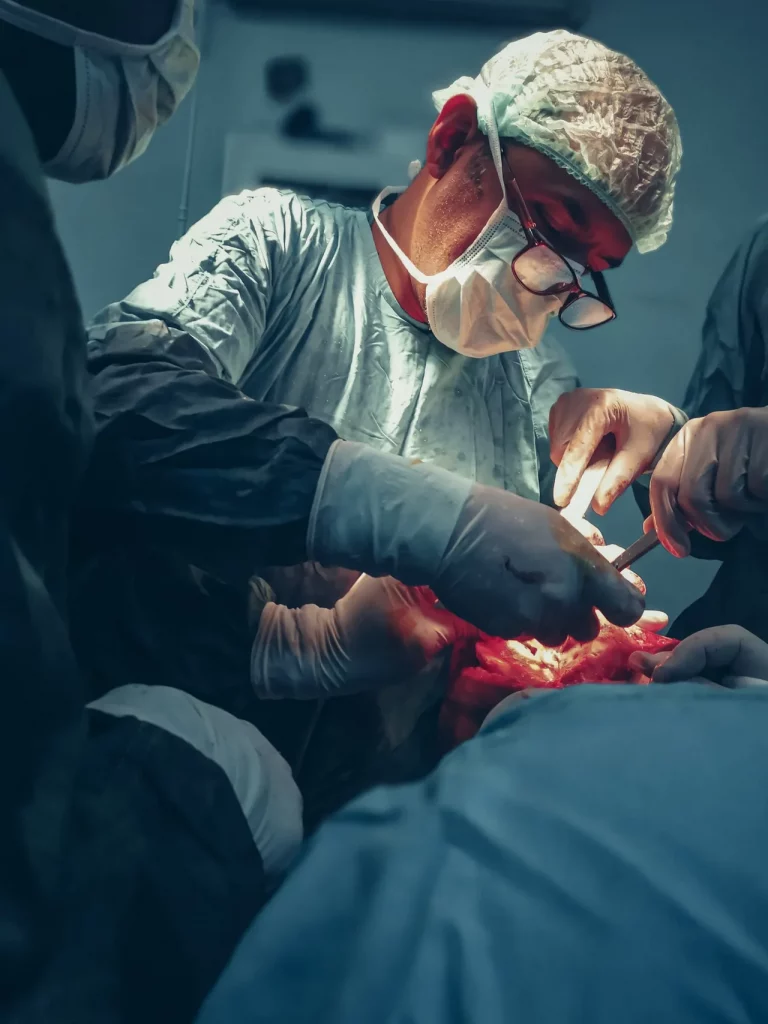Rhinoplasty in Paris 16
Specialist rhinoplasty surgeon
At the centre of the face, the nose plays a major role in identity and function. In some cases, the variability of its features asserts a strong character or identity, but they can also be resented if they are not accepted. The result is a complex and growing psychological distress, leading to a spiral of withdrawal and disruption of social relationships.
Rhinoplasty in Paris 16
The surgical project
As the first segment of the respiratory tree, a deviated or traumatised nose can limit the efficiency of the respiratory function, and its treatment allows the respiratory obstacle to be removed.
The radix or root of the nose, the projection and width of the nasal dorsum, the presence of a bony or cartilaginous bump, a tip that is too wide, pointed or drooping when smiling, the axis of the nose, the width and position of the nostril wings, and harmony with the forehead and chin are all criteria to be taken into account when deciding on a surgical project.
Whatever technique is envisaged, particular attention must be paid to defining the surgical plan with Dr Arié Azuelos, rhinoplasty surgeon in Paris. Every millimetre and degree of angulation counts and can transform the unattractive into harmony.


The different types of rhinoplasty:
Open or closed approach
Closed rhinoplasty is performed through incisions hidden inside the nose. Open rhinoplasty adds an incision at the columella (the skin bridge separating the two nostrils). This incision lifts the skin of the nose (‘opens’ the nose) and allows better visualisation of the structures and surgical procedures.
Preservation rhinoplasty & structural rhinoplasty
Preservation rhinoplasty is a type of rhinoplasty designed to preserve the nasal structures as much as possible. Unlike structural rhinoplasty (classic rhinoplasty) where the structures to be corrected are cut out and removed, the aim of preservation rhinoplasty is to reposition and reshape the nasal structures.
It helps to avoid irregularities and pinching of the nose that would indicate surgery or a “remade” nose.
Preservation rhinoplasty and structural rhinoplasty are not necessarily mutually exclusive, and can complement each other (preservation rhinoplasty on the nasal dorsum and structural rhinoplasty on the tip, or vice versa).
Preservation rhinoplasty is not suitable for all patients, and a structural procedure may have better results for major modifications (major deviations or significant reduction in the width of the nose).
Both preservation and structural rhinoplasty can be performed through an open or closed approach.
Primary, secondary or tertiary rhinoplasty
Primary rhinoplasty is rhinoplasty performed on a nose that has not been operated on or traumatised (fracture of the nasal bones). Secondary and tertiary rhinoplasty, on the other hand, are performed on a nose that has already been reshaped. They are more complex because the structures have already been altered, weakened and scarred.
Aesthetic rhinoplasty and functional rhinoseptoplasty
The nose is the first segment of the respiratory system. A deviated septum or enlarged nasal turbinates (structures that warm and humidify the air before it reaches the lungs) can interfere with breathing. Rhinoseptoplasty is then indicated to remove the obstacle. This is one of the criteria for reimbursement by the French National Health Insurance (Assurance Maladie) and your mutual insurance company.
It may be combined with a cosmetic procedure.
Ultrasonic rhinoplasty
Ultrasonic rhinoplasty is not strictly speaking a specific rhinoplasty technique.
Rhinoplasty is said to be ultrasonic when a piezoelectric micro-saw is used. This literally cuts precisely through the bone, unlike other instruments which tend to break the bone. The procedure is therefore much more precise and there is less post-operative pain. Dr Arié Azuelos, rhinoplasty surgeon in Paris, is equipped with the new piezoelectric instruments, which can be used either open or closed, for preservation or structural rhinoplasty.
Medical Rhinoplasty
Medical rhinoplasty is an alternative form of aesthetic medicine whose indications do not overlap with those of surgical rhinoplasty. It is based on the injection of hyaluronic acid to restore volumes, shadows and highlights; it is an augmentation rhinoplasty. It is also performed by your rhinoplasty surgeon in Paris.
What does rhinoplasty involve?
Depending on the project, your Paris rhinoplasty surgeon will prepare an open or closed, preservation or structural, functional or aesthetic, total or advanced rhinoplasty.
This operation requires a general anaesthetic and a short hospital stay (1 night).
How to prepare for a Rhinoplasty?
Two or three consultations will be necessary to define a surgical plan with your rhinoplasty surgeon in Paris. It will be essential to define what you want, what you want to avoid and what is possible.
Low-radiation imaging of the facial mass (Cone Beam) will be requested and will be necessary for your Paris rhinoplasty surgeon to carry out photographic simulations.
Rhinoplasty in Paris 16 & Paris 7
What happens after rhinoplasty?
The result is not immediately visible. Although the aesthetic improvement can be spectacular very quickly, the nose remains swollen for several months and can be reshaped up to a year after the operation. The functional benefits (on breathing) are felt fairly early on (two weeks).
Wicks or splints are placed in the nostrils for 24 to 7 days, depending on the extent of damage to the nasal septum. A splint on the back of the nose is worn for 7 days and will be removed by your rhinoplasty surgeon in Paris. Bruising may appear, requiring you to avoid social contact for one to two weeks.
Moderate pain is well controlled by the painkillers prescribed by your rhinoplasty surgeon in Paris.
What are the risks of rhinoplasty?
As with any surgical procedure, complications such as infection, anaesthesia or haematoma may occur.
How is rhinoplasty cared for?
The procedure may be reimbursed by the Assurance Maladie and your mutual insurance company, subject to prior agreement issued by the Assurance Maladie’s medical officer. Coverage will depend mainly on the presence of a deviated nose and a respiratory problem.
The request for prior agreement is drawn up by your rhinoplasty surgeon in Paris if a disorder is detected.
Dr Arié Azuelos, rhinoplasty surgeon in Paris, carries out all the operations himself.
Aesthetic Surgery Paris 7 and Massy
Dr Azuelos on the networks
Here are a few photos of the results obtained thanks to the various surgical procedures or acts of aesthetic and regenerative medicine. As each patient is unique, the final result differs from one patient to the next. These photos are purely for information purposes and illustrate the possible results.
